You are here
Home › Comics › Open Mike Night - Amazing Spider-Man #16.1 & Batman - The Killing Joke ›Open Mike Night - Amazing Spider-Man #16.1 & Batman - The Killing Joke
FTC Statement: Reviewers are frequently provided by the publisher/production company with a copy of the material being reviewed.The opinions published are solely those of the respective reviewers and may not reflect the opinions of CriticalBlast.com or its management.
As an Amazon Associate, we earn from qualifying purchases. (This is a legal requirement, as apparently some sites advertise for Amazon for free. Yes, that's sarcasm.)
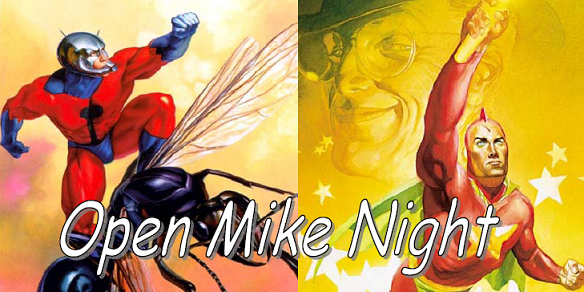
Amazing Spider-Man #16.1
Written by: Gerry Conway
Penciled by: Carlo Barberi
Inked by: Juan Vlasco
Colored by: Israel Silva
Lettered by: VC’s Joe Caramagna
Cover by: Arthur Adams and Sonia Oback
Published by: Marvel
Cover Price: $3.99
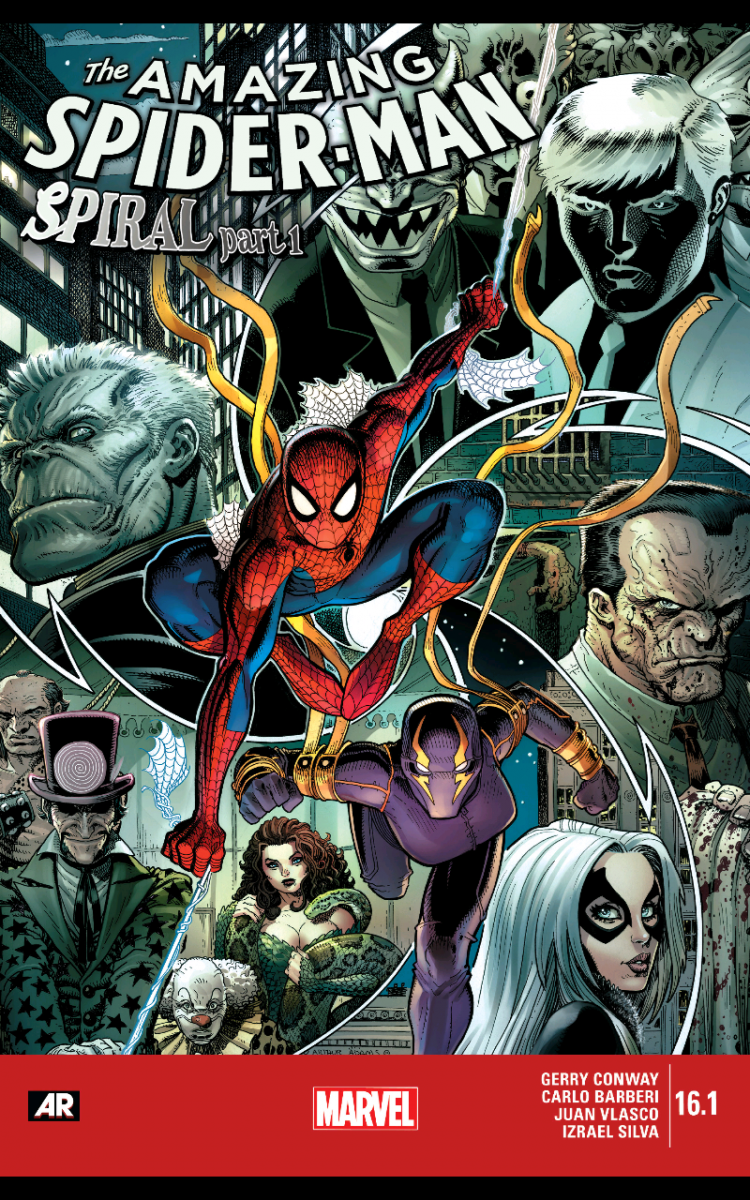 Weaver: After the big picture events of Spider-Verse and Superior Spider-Man and more Spider-Stuff than you can shake a stick at, we needed a more...classic Spider-Man story. We get that here with Spider-Man taking on Tombstone with an assist from a less experienced hero that is facing some of the same problems Peter had at the start of his career. It was odd, but in a way, this story managed to have everything it should have and yet feel empty to me in a way. Maybe I just got used to everything being a big event and so the good old gang war plot...which would have been a huge event 40 years ago...seemed like it wasn’t flashy enough.
Weaver: After the big picture events of Spider-Verse and Superior Spider-Man and more Spider-Stuff than you can shake a stick at, we needed a more...classic Spider-Man story. We get that here with Spider-Man taking on Tombstone with an assist from a less experienced hero that is facing some of the same problems Peter had at the start of his career. It was odd, but in a way, this story managed to have everything it should have and yet feel empty to me in a way. Maybe I just got used to everything being a big event and so the good old gang war plot...which would have been a huge event 40 years ago...seemed like it wasn’t flashy enough.
Maillaro: My biggest issue with this comic is that it felt old fashioned in so many ways. Some of the scenes were ridiculously overexplained. It really made me feel like Gerry Conway was a little out of touch with how a modern comic should read.
I am also a little bothered that I felt like I was sort of tricked into buying this issue. By making it 16.1, 17.1, etc, it seems like part of the core Spider-Man series. It isn’t. If they had made this a mini-series, I doubt I would have given it much thought, before we had done the last few columns about Gerry Conway’s classic stories. But by dumping it in the middle of the main series this way, I felt compelled to read it.
Even more annoying, if you subscribe to Amazing Spider-Man on Comixology, this and last week’s Amazing Spider-Man Special were automatically thrown in. Books not connected to the main run and by completely different creative teams. I actually don’t subscribe to any titles on Comixology for exactly this reason.
Weaver: And yet, while it felt old-fashioned in a lot of ways, it didn’t have the same zaniness that the actual old-fashioned comics had. It’s as if Conway wanted to tell a modern comic story, and wanted to tell a story like he used to, and ended up with something that wasn’t satisfying as either. And the shame of it is, there’s no specific events or moments I can point to. I can’t put my finger on exactly why it didn’t work for me. But it didn’t.
Also, side rant about the whole “point 1” trend these days. That’s total crap. Number your titles in a way that makes some modicum of sense.
Maillaro: To be fair, Death of Gwen Stacy didn’t have a lot of zaniness...but this story didn’t have any where near that much importance.
It may sound like I really hated this book, but honestly, it was mostly just there for me. Wasn’t bad at all, but as I keep saying, it was not something I feel I would normally have paid 4 bucks for if I wasn’t doing this column...we do this, dear reader, so you don’t have to.
Weaver: Come on! That wacky Goblin! That’s the definition of zany. No, seriously, though, you’re right. I think what it comes down to for me is that this comic had no soul. It was basically textbook execution without spirit. And Spider-Man, at his heart, is about spirit.
I wonder to myself how I would have reacted had I read this story in the 70’s or 80’s, because I feel that our inundation with big events makes smaller things seem even smaller. I think I wouldn’t be feeling very strongly about it then either.
Maillaro: We read a lot of smaller scale books, so I don’t think that’s the issue as much as they seemed like it should be some kind of event, and it just didn’t quite get there.
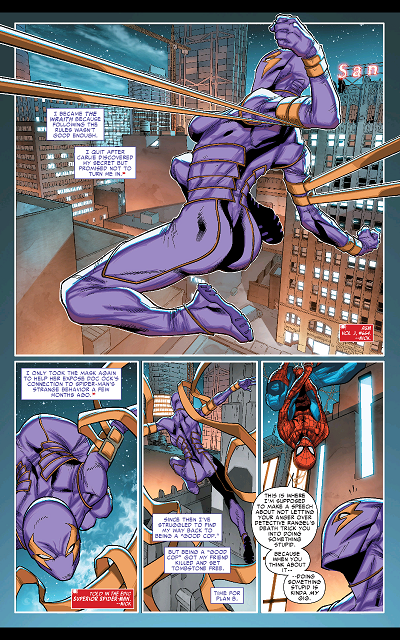
I do want to go back to the numbering thing. It does seem to me like comics are getting way too damn complicated to collect. In the past, we just had annuals and that was it. Now you get Annuals, specials, .1 issues, ½ issues and on and on.
I did like the art in this issue though. And it was nice to see some of the supporting cast that had kind of vanished lately back in the spotlight like Wraith and Negative Man.
Weaver: The art was good. I liked how it went from Spidey wanting Wraith to come help him out to deciding Wraith was...not making the best decisions. That’s about the most positive I can get on it. But again...nothing here was wrong in and of itself, there is no shark jumping moment. I’d go about a 2 on the writing, 4.5 on the art.
Maillaro: I typically go a 2.5 for a book that I am not sure about, and that is where I am going here too. With a 4.5 for the art too.
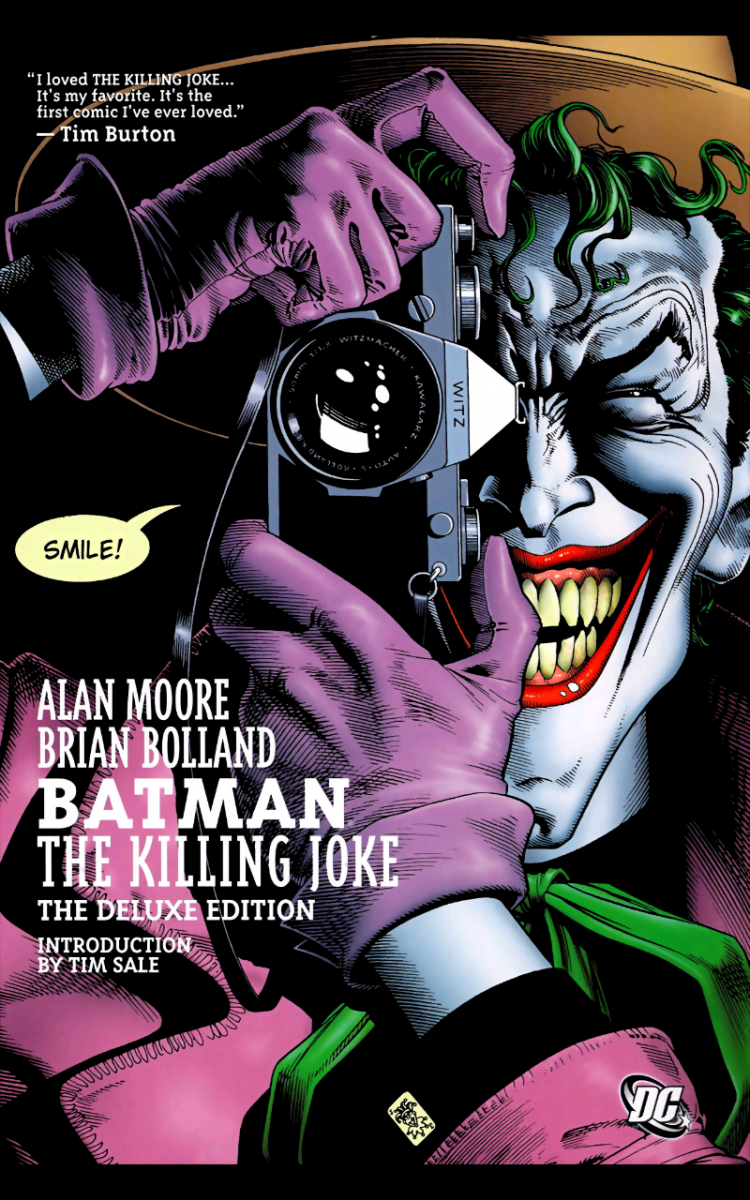 Batman: The Killing Joke
Batman: The Killing Joke
Written by: Alan Moore
Art by: Brian Bolland
Colored by: Brian Bolland
Lettered by: Richard Starkings
Published by: DC
Cover Price: Varies depending on edition
Maillaro: While we always try to cover interesting and fun comics, we typically don’t let the news of the week sway our coverage all that much. We were supposed to cover 100 Bullets this week, but with the Batgirl cover controversy this week, I did think it was necessary (and good click bait) to cover Batman: The Killing Joke this week.
Weaver and I have talked some about this during the week, but we also tried to save some of it for the column. I think we should cover the comic first, and then we’ll talk about the controversy after, cool with you?
Weaver: Of course. That way, if either of us does the internet equivalent of hanging up the phone and storming off, it won’t stand in the way of the review. Heh.
So, The Killing Joke. It’s long been held up as one of the best Batman stories, definitely the best Joker story, and I have a hard time arguing with that. Alan Moore and Brian Bolland are both at the top of their game here, and...you know what, I won’t take a shot at Moore here. What he’s put together for the Joker is brilliant. Some people are more into Long Halloween or a variety of other things, but The Killing Joke manages to tell basically the full story of the Joker and a good slice of Batman in an astonishingly brief time. I don’t know if I’ve ever read a comic that did so much with such a small page count.
Maillaro: So much on a small page count is the perfect way of describing this comic. I actually had forgotten it was so “short.” In terms of actual comic pages, this book is around 45 pages long. By the way, that makes the digital version which is $14 obscenely priced. If someone wants to read this, I would really recommend picking up DC Universe: The Stories of Alan Moore. You get The Killing Joke, Whatever Happened to the Man of Tomorrow? and a bunch more stories. $19 on Amazon. Hell, the Green Lantern stories alone make it well worth it, with stories introducing Mogo and F-Sharp Bell.
I have my issues with some of Alan Moore’s work, but I’ve always thought The Killing Joke was pretty much the perfect Batman story. It starts with Batman coming to the realization that there is pretty much only one way their story can end...he will kill the Joker or the Joker will kill him. Before he can share that realization, he realizes that the Joker has escaped again. The Joker is determined to give Commissioner Gordon the same “bad day” that he had when he lost his own wife and child. He shoots Barbara Gordon to paralyze her, and tortures Gordon. In the end, Gordon keeps his wits and sanity. Batman shows up to stop the Joker, and finally gets the chance to share his realization. Joker responds by telling him a joke...and the issue ends with them both sharing a laugh. The parallels with how three men dealt with their own “bad day” is the focus of this story and it works so well.
Weaver: You know, I didn’t find Joker’s last joke to Batman to be that funny. Which I guess then makes it buy into more the whole idea that Batman and Joker are not so different after all, one of the main themes of this issue. But progressing from that comes the essential differences they have. What they did with what they were given was completely different. And I liked that a lot.
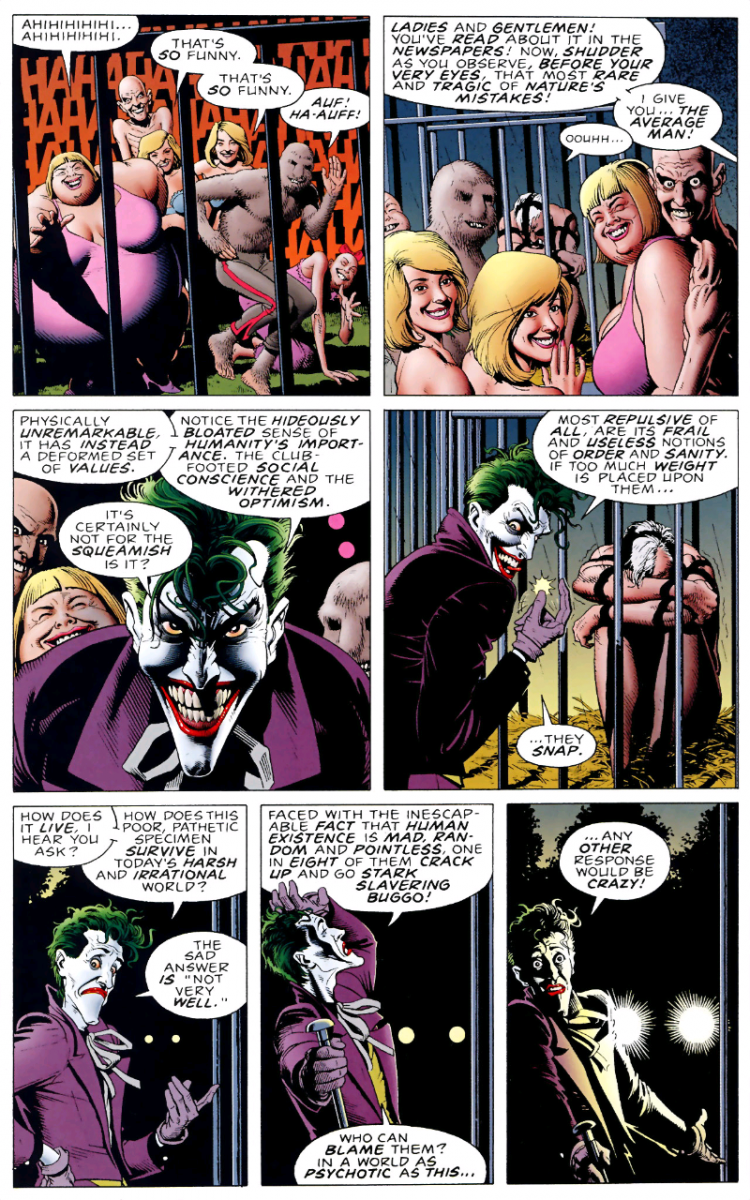 A lot of people talk about the horrors Joker put Barbara through here, and I have to say...things weren’t so sunny for her father, either. And he puts a lot more effort and thought into that. However, the Barbara scene is really open to interpretation. And when that’s the case, a lot of minds go to dark places. I remember Stephen King once saying that his reader’s minds were capable of things much scarier than he could ever write.
A lot of people talk about the horrors Joker put Barbara through here, and I have to say...things weren’t so sunny for her father, either. And he puts a lot more effort and thought into that. However, the Barbara scene is really open to interpretation. And when that’s the case, a lot of minds go to dark places. I remember Stephen King once saying that his reader’s minds were capable of things much scarier than he could ever write.
Maillaro: Yeah, the story was FAR more about torturing Jimbo than Barbara, but people seem to forget that. I have always wondered if the idea that Barbara was raped by the Joker (which this issue never seems to suggest...though being stripped naked is a sexual violation in its own right) was more because of the fact it was written by Alan Moore and he’s got a reputation...one he’s worked hard to cultivate.
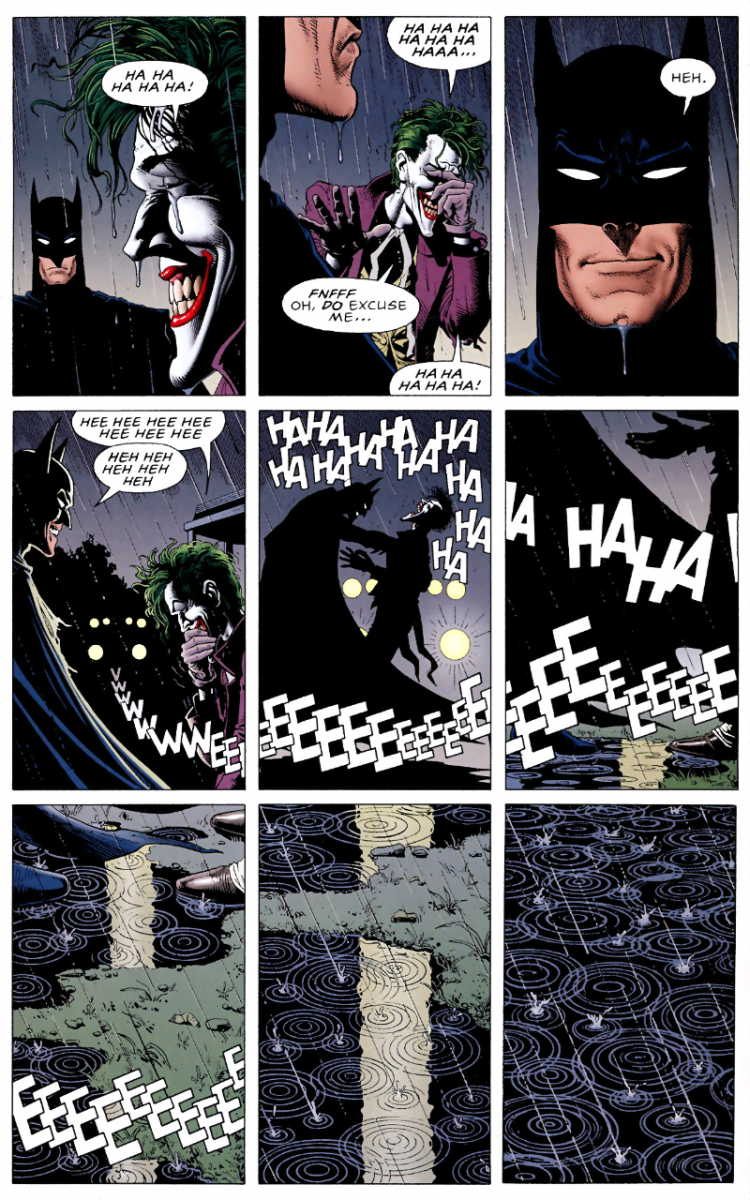 I don’t think the joke was supposed to be funny as much as just to say “we’re both crazy...and playing a game that makes no sense to anyone except for each other.” The scene has always been very unsettling to me, and brilliant in a way I could never quite put my finger on.
I don’t think the joke was supposed to be funny as much as just to say “we’re both crazy...and playing a game that makes no sense to anyone except for each other.” The scene has always been very unsettling to me, and brilliant in a way I could never quite put my finger on.
By the way, did you read Brian Bolland’s afterward in the version we used? I was surprised to find out this story was pitched by him to Alan Moore, not the other way around, though Moore did add a lot to it, including giving Joker an origin and paralyzing Barbara.
Weaver: I didn’t read it, but I did know that it kind of grew out of Moore and Bolland intending to work on something else which wasn’t greenlit, and when Bolland was asked what he wanted to do instead, he said, “The Joker, please.”
Stripped naked...and taken pictures of. I didn’t get the feeling that there was actual sexual intercourse involved, and I think that would be a huge stretch, but yes, it is still a sexual violation.. I mean, for one, when Batman is talking at Barbara’s hospital room, the cop mentions the picture taking theory, and you’d think he’d mention if there was anything else amiss.
Maillaro: Yeah, exactly. And in all the many, many times this has been addressed in comics since, all they talk about is how she was paralyzed and tortured.
But again, like you said, there was a lot of ambiguity here. Even the Joker suggests that the origin presented here might not be true. I had used the multiple choice comment when we were talking about this earlier and had forgotten that line came directly from this issue.
I actually sort of wish that Joker had died here….he’s really gone all downhill from here. In recent issues, it was even suggested that Joker was some kind of immortal on the level of Vandal Savage or Ras Al Ghul.
Weaver: My DC continuity isn’t the best, but I feel like this happened before he beat Jason Todd to death BECAUSE WE DEMANDED IT. In which case, I support him living through this issue.
But that would have been a good, if highly improbable for marketing reasons, end to the story. It also would have made them Elseworld it immediately, so I’m glad that didn’t happen.
Maillaro: You are probably right. I am giving this one a pair of 5’s. It would be ridiculous for me to do otherwise. The only thing I hated about this issue was the price of the reprint and it’s real hard to blame that on the creators who did it 30 years ago…
Weaver: Yeah, I’m a pair of 5’s too. A lot of people praise Moore’s writing, and rightfully so, he tells some good stories, but Bolland’s art is phenomenal here too. As for the reprint pricing...I consider that about the same as the aforementioned point ones and one halfs and stuff. The reprint is loaded down with peripheral stuff in order to drive the price up because this is one of those “desert island” comics that is consistently well regarded. I suppose I can blame Moore and Bolland for being so damn good that it justifies filling it out with sawdust in order to charge people more, but I’m glad they were that good even if it means it’s ridiculously expensive now.
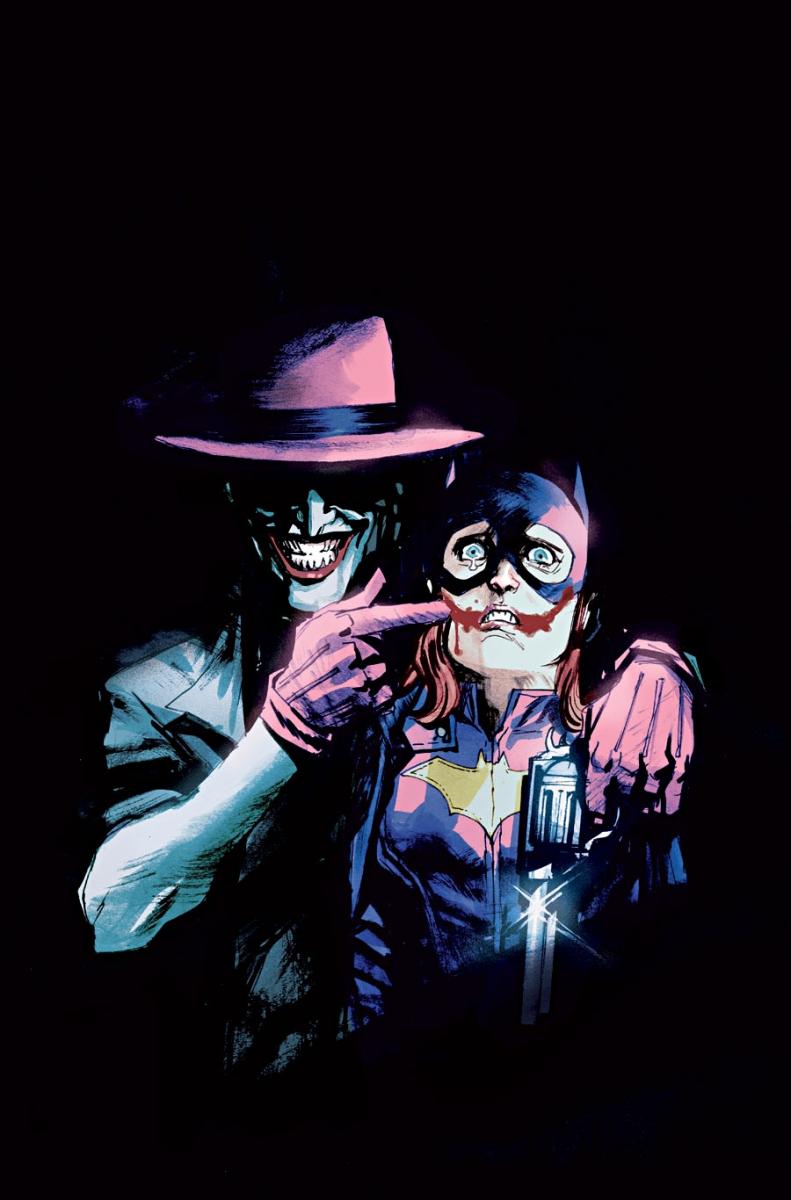
Maillaro: When I started this review, I mentioned a controversial Batgirl cover. In case you don’t follow the comic news media, a few weeks ago, DC had announced that on their June comics, several series would be getting special “Joker” variant covers. Many of them were kind of playful, with Aquaman being harassed by fish with Joker smiles.
And then there was the cover for Batgirl. Which featured a terrified Barbara Gordon being held at gunpoint by the Joker.
Complaints against this cover fell in two categories mostly:
1) This cover is not appropriate for the tone of the current Batgirl series.
-
2) This cover depicts violence against women.
Many bloggers and commentators took to the web to express their feelings. Soon many who were complaining about the covers said they were receiving harassment and death threats from people in support of the covers, which is personally disgusting to me. I like debate, but death threats and harassment have no place is serious grownup discussions.
As a result, the cover artist asked that the cover be removed, and DC agreed to comply. Personally, I have a lot of warring emotions about my own feelings about this cover and the cancellation. And since this place is the closest I get to therapy, I decided that it was important to discuss these issues.
When we talked about this over the phone, Weaver, you said you disagreed with a lot of my thoughts on this, so I will let you lead off.
Weaver: Well, okay. This is a huge kettle of fish.
First of all, our society has this idea these days that one must be at one of the two extremes, and no one falls in between. You can’t like both Coke and Pepsi. You can’t have some liberal and some conservative views. And if you have a liberal or conservative view, you’re seen as automatically a Michael Moore or Glenn Beck type who is basically a caricature of the entire philosophy. So if you weren’t gung ho for this cover, you were everything wrong with the comics industry and needed to go far away and not bother Serious Comic Readers again. Conversely, if you were gung ho for this cover, you were everything wrong with the comics industry and needed to go far away and not bother Serious Comic Readers again.
I have issues with this cover, but it’s not really in either of those buckets. It’s closer to bucket #1, but I don’t read Batgirl, so I really don’t know what the tone is. My opinion is: Rafael Albuquerque did his job too well here. He wanted to pay some tribute to The Killing Joke, and he did, but this cover is disturbing in a way that I don’t really like any cover being. Even horror comics tend to shy away from having that explicit of an expression of abject fear on the cover. As an interior page or a pin-up, I’d have no issue with this whatsoever, and it’s a great work of art. But it’s too emotionally extreme to stick up front.
Maillaro: To me, that is kind of strange argument to make. Too extreme to stick up front? That is the whole point of art. To excite and upset people. I think the piece is “beautiful” in that regard. You can’t help but look at it and have an emotional reaction. I actually want it as a poster.
The Killing Joke is an important story, and for me, the only time Barbara Gordon has been an interesting character was when she was Oracle, a direct result of this book. I have always found the later Batgirls to be far more interesting, like Cassandra Cain and Stephanie Brown. BUT, some of the outcries against this cover have called for Killing Joke to be retconned just because of how uncomfortable the material is.
Again, this is the art argument to me. Why in the world are so many people calling for our art to be so watered down?? I want to be upset, and think, and argue. Instead, we get “don’t do that...your cover is making me upset in my tum tum.”
Weaver: Any magazine you’ll ever buy is more tame and sedate on the cover than on the interior pages. It’s essential to the entire publishing genre. It’s the stark opposite of newspapers, which have to put about half of each of their most shocking stories up front. But with magazines, and by extension comics, a lot of people are going to be browsing through and seeing only the cover. I don’t buy the whole “rare variant that few people will notice” argument, because I see variants of 1:10, 1:25, and even 1:50 displayed on the shelves at my local comic shops.
I could get behind a poster of it. I may even buy a poster of it. It’s really good art. But I think it’s art that shouldn’t be sitting there as a land mine waiting to ambush someone who doesn’t want to be shocked and disturbed by their comic covers. Once you open the comic, all bets are kind of off (depending on rating, etc), but to put that much up front is a bad decision. Museums are often set up this way, with the more objectionable things in places that the average visitor can easily avoid if they choose to.
Maillaro: I actually think that argument makes sense, but is slightly backwards. The cover is very likely to chase the “right” audience away from the book. Though I think Batgirl has done most of it’s business by word of mouth, and I don’t see this cover as really chasing any of the readers away.
But you can see a lot worse than that on many covers. Have you seen the cover of this year’s Sports Illustrated Swimsuit Issue? I was in Barnes and Noble tonight and noticed that someone turned every single issue around so they didn’t have to show the real cover, with a woman teasing that she was about to show vag...
Weaver: At a few stores around here, they put a white piece of board in front of Cosmo as if it were porn or something. It even says, “Adult Material.” But both of those examples are magazines that you kind of expect to be borderline adult material.
Sure, I agree art should excite and upset people...who are coming into it ready to be excited and upset. Or even if it’s something that holds some political or social value that must be communicated, in the artist’s eyes. I think we, as a culture, know about the line that we want drawn of how scary a comic cover should be, and I think we know that because I’ve never seen another comic cover that was this emotional. I have to assume that this work is not the absolute first cover submission that had this much...raw emotion, but it is the first I can think of that was slated to make it to print.

I also don’t discount the idea that DC knew that when they chose it, and expected to retract it. Because the amount of people who cared even a little about Batgirl’s comic suddenly went through the roof.
Maillaro: This is one thing about this story that really bugs me though...Batman 37 had a variant cover that featured the aforementioned Jason Todd. It was far less artistic...far more violent...and no one even mentioned it. I think people need to be a LOT more consistent…
Weaver: Yeah, see, I don’t find it as objectionable...I mean, I don’t find Batgirl’s art objectionable for me personally, I’m saying as a whole. The thing on Batgirl that gets me every time is the look on Barbara’s face. You don’t see that much emotion, especially that much fear, on a hero’s face, and it’s tough to stomach because it is so different. Joker beating on a guy whose face we don’t even see? Meh, Jason Todd could be laughing or having the Roy Harper In Arrow multi-use expression for all we know.
Maillaro: Thanks bro. I really enjoyed this discussion a lot. See, we can be civil to each other...a far cry from when we first met...
Like I said last time, I am away next week, but when I get back maybe we can finally do 100 Bullets...I sort of derailed that one.
Weaver: Have a good time on vacation. I’m going to try to get a column together with my son on Batman and Robin, but he has a massive English project going and may be “writing”ed out.
Final Scores
|
Maillaro – Story |
Weaver – Story |
Maillaro – Art |
Weaver – Art |
|
|
Amazing Spider-Man #16.1 |
2.5 |
2 |
4.5 |
4.5 |
|
Batman: The Killing Joke |
5 |
5 |
5 |
5 |


